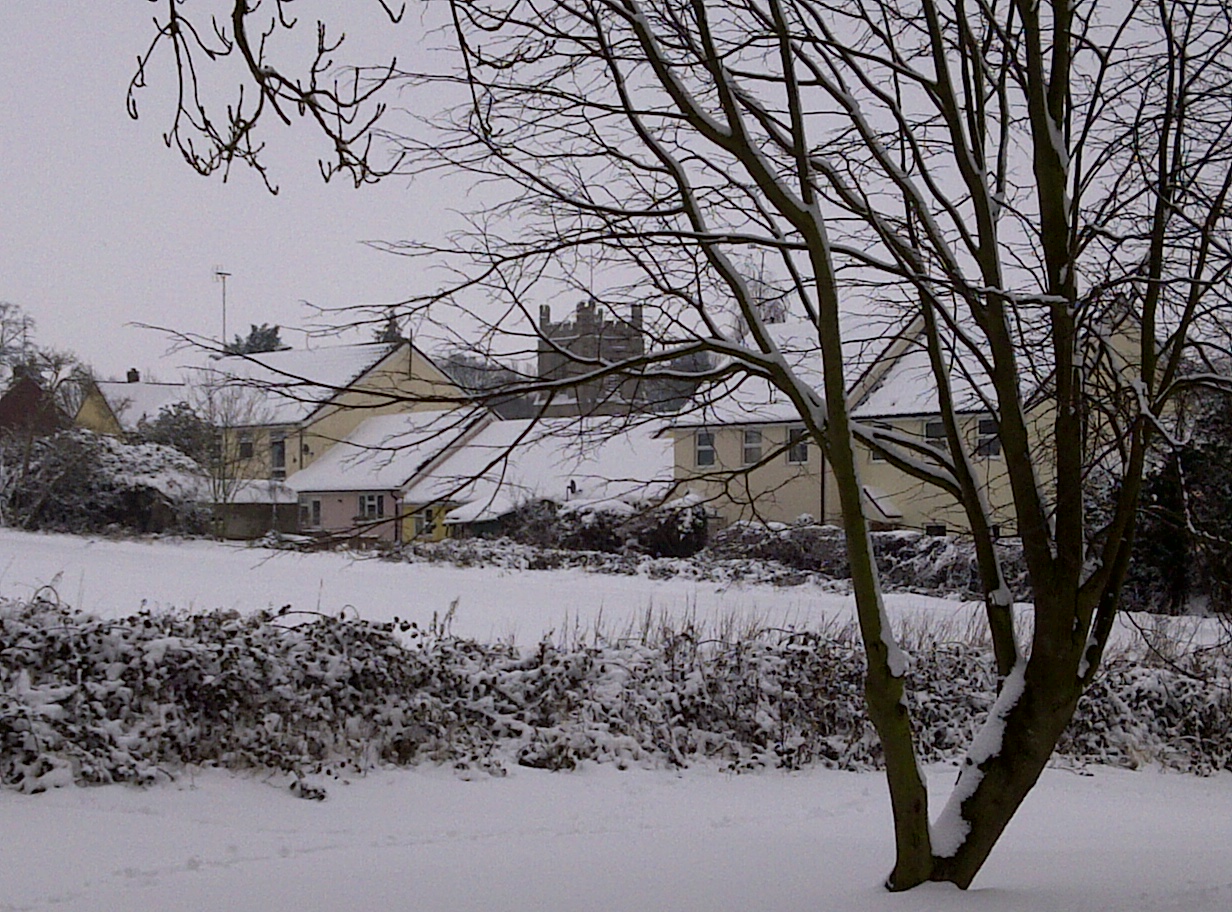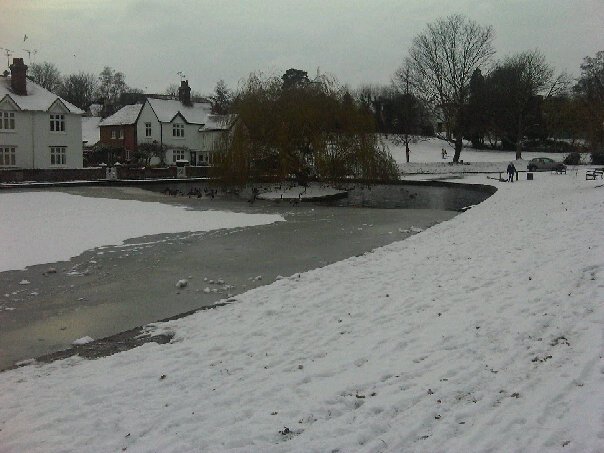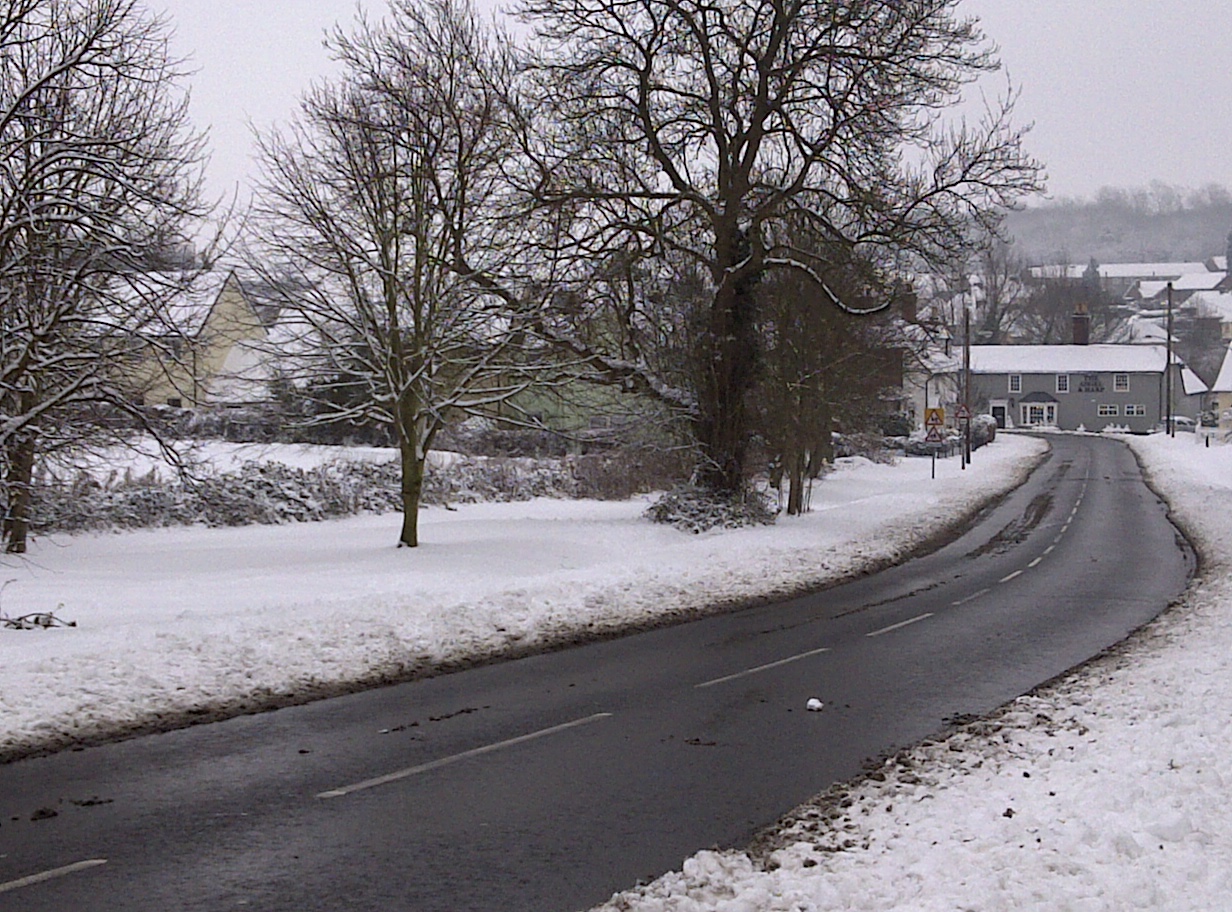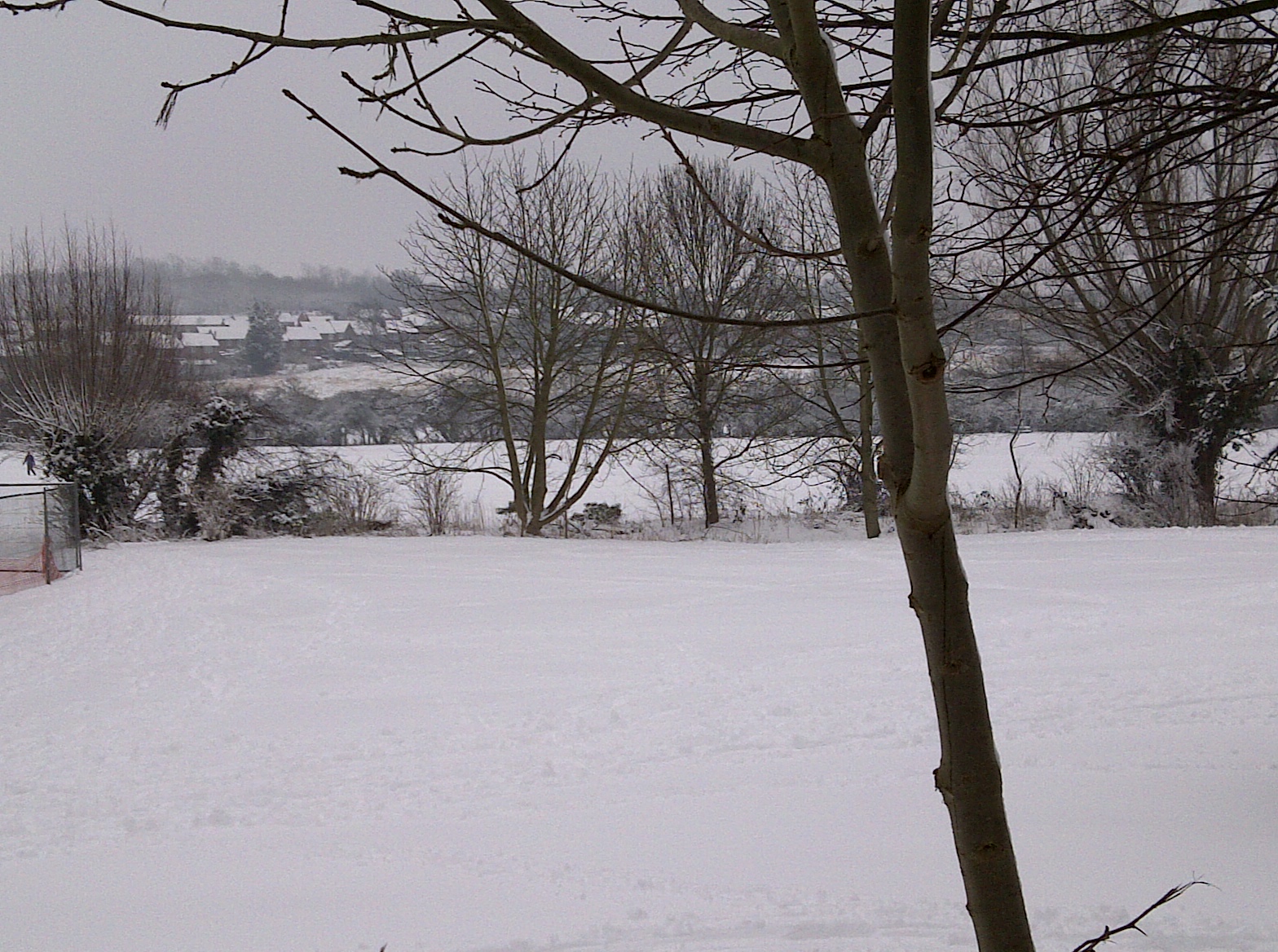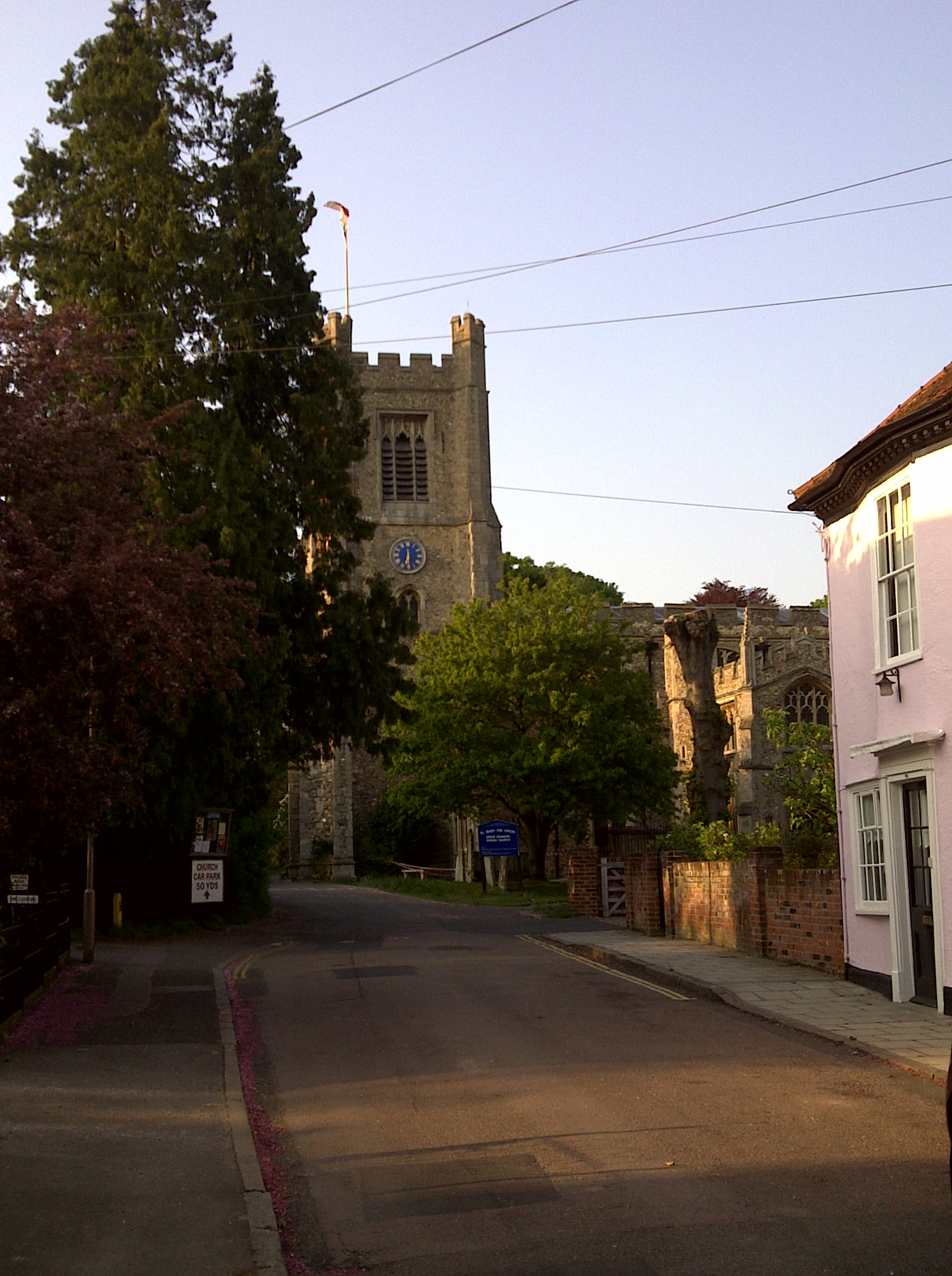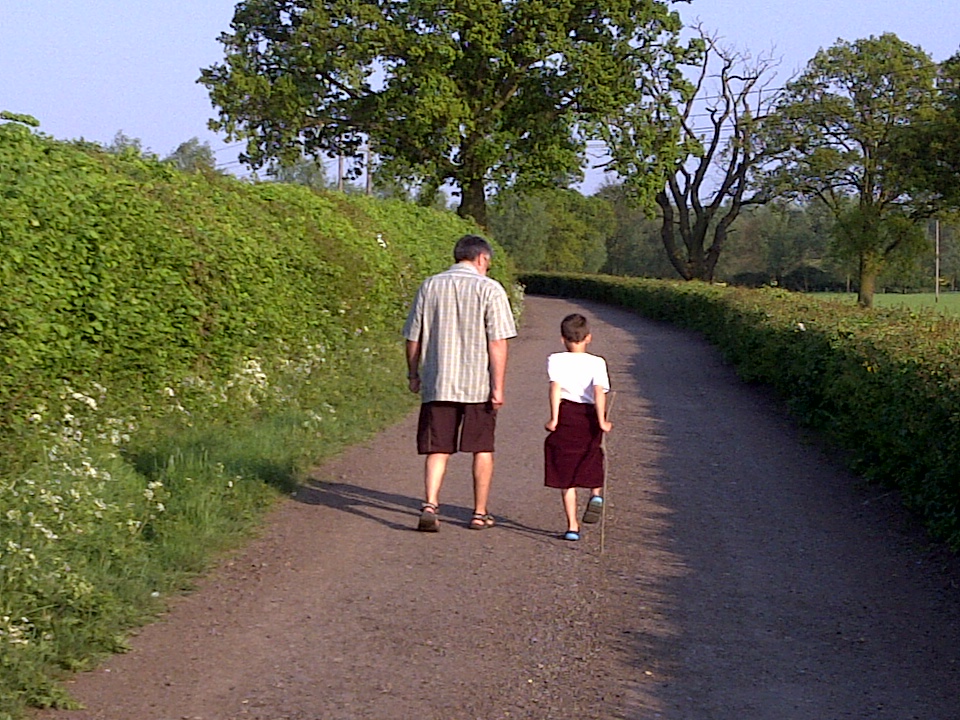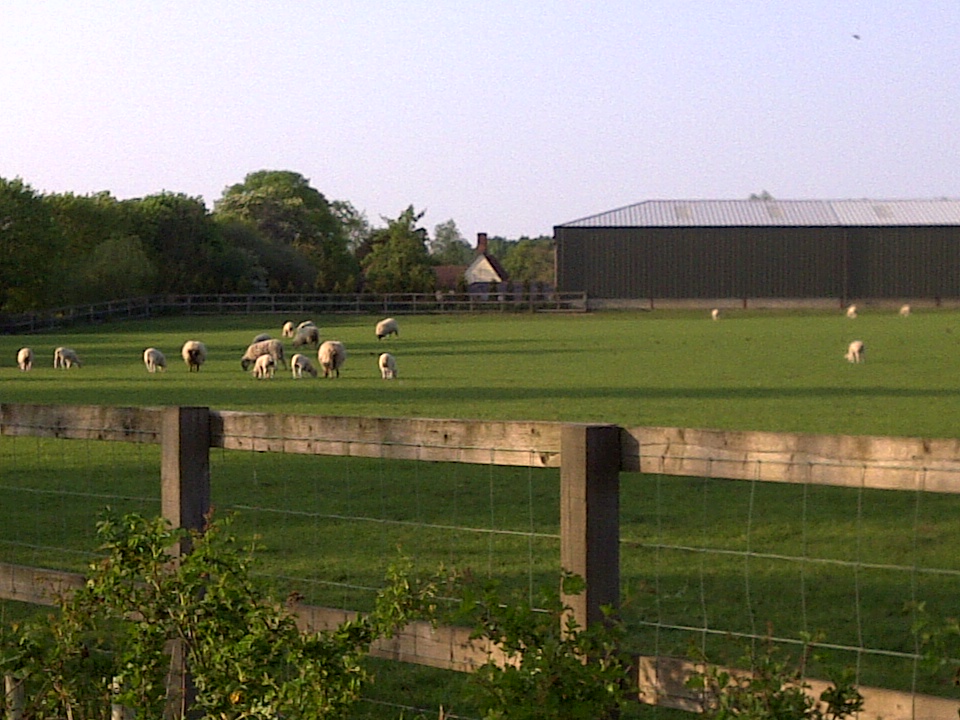Bringing home the bacon: The Dunmow Flitch Bacon Factory
Dunmow* is known throughout the world and history as being the English town where the curious but ancient custom of the Dunmow Flitch takes place. This ancient ceremony is when couples come into the town, and, in front of a judge and jury, try to persuade a court of law that for a year and a day they haven’t wished themselves unwed. If they win the court case, and persuade the judge and jury of their love for each other, then they win a ‘flitch of bacon’ (a large side of cured pig). The court is quasi-formal with a proper judge, jury and barristers. However, all is not as it seems as the legal proceedings are very light-hearted with one barrister defending the Pig, and the other for the couple. Any couple who wins the Flitch is said to be ‘bringing home the bacon’ and is carried aloft on the ancient Dunmow Flitch chair by the town’s ‘yeomans’ in a parade through the streets of Great Dunmow.
 The last Dunmow Flitch – in 2012 –
The last Dunmow Flitch – in 2012 –
carrying the flitch of bacon through the town
before the Flitch Trials
This ancient custom was mentioned in medieval literature by both Geoffrey Chaucer and William Langland towards the end of the 14th century. Chaucer’s Canterbury’s Tales – The Wife of Bath’s Tale states
The bacon was nat fet for hem, I trowe,
That som men han in Essex at Dunmowe.
William Langland’s Piers Plowman states
Though they go
to Dunmow,
they never fetch
the Flitch.
In the 20th century, the Dunmow Flitch – the side of cured bacon – was provided by the Dunmow Flitch Bacon Factory. This was a large factory and employer of many people within Great Dunmow and surrounding areas until its closure in the 1980s. Sometime in the 1920s or the 1930s, the owners of the Dunmow Flitch Bacon Factory commissioned Willett’s of Great Dunmow to take photos of the workforce in action at the factory and thus create a unique set of postcards of the Dunmow Flitch Bacon Factory. As one of my readers pointed out on my post about Great Dunmow’s Berbice House school – why were these postcards produced? Who were they aimed at? I cannot answer these questions, but I can show you the postcards of the Dunmow Flitch Bacon Factory and flitches of bacon produced in the factory.
 Dunmow Flitch of Bacon Factory (Exterior)
Dunmow Flitch of Bacon Factory (Exterior)
 Dunmow Bacon Factory – Pig Killing
Dunmow Bacon Factory – Pig Killing
 Dunmow Bacon Factory – The Hanging Hall I. The child at the left of the picture looks to be about 12-14 years of age.
Dunmow Bacon Factory – The Hanging Hall I. The child at the left of the picture looks to be about 12-14 years of age.
 Dunmow Bacon Factory – Cleaving the pigs
Dunmow Bacon Factory – Cleaving the pigs
 Dunmow Bacon Factory – The Employees. Is the person 3rd from the left a woman?
Dunmow Bacon Factory – The Employees. Is the person 3rd from the left a woman?
 Dunmow Bacon Factory – The Hanging Hall II
Dunmow Bacon Factory – The Hanging Hall II
 Dunmow Bacon Factory – The Manager and Irish Employees. It is interesting that the Irish Employees are in a photograph separate from the other employees.
Dunmow Bacon Factory – The Manager and Irish Employees. It is interesting that the Irish Employees are in a photograph separate from the other employees.
These postcards are incredible pieces of 20th century social history showing us the employees and the inside of the factory. In addition to the inside of the factory, there are also in existence external photographs. In 1928, an aeroplane flying the skies of Essex and Suffolk took the photo below of Great Dunmow. The large building in the centre is Hasler’s Corn and Seed mill, and the low-lowing buildings to the right-edge of the photo is the Dunmow Flitch Bacon Factory.
 Hasler and Company Corn and Seed Merchants, Great Dunmow. This photo is from English Heritage’s Britain from Above project. Click the photo to be taken directly to a zoomable image of this photo from their website.
Hasler and Company Corn and Seed Merchants, Great Dunmow. This photo is from English Heritage’s Britain from Above project. Click the photo to be taken directly to a zoomable image of this photo from their website.
 Close-up of the Dunmow Flitch Bacon Factory from the air in 1928.
Close-up of the Dunmow Flitch Bacon Factory from the air in 1928.
To the left of the factory are the railway sidings running to
the factory from Dunmow’s station.
*-*-*-*-*-*-*-*-*-*
*I use the word “Dunmow” with great care, because the medieval Dunmow Flitch originated in the tiny village of Little Dunmow and its pre-Reformation priory. But in modern times – certainly since the Flitch’s revival in the nineteenth century – the ceremony has moved to the neighbouring larger town/village of Great Dunmow some three miles away from its original location. There are two Dunmows – Great and Little. In the Tudor records, Great Dunmow was called “Much(e) Dunmow” and Little Dunmow was called “Dunmow Parva”. During my research on Great Dunmow, I have read many many accounts about the medieval/Tudor Dunmow from many commentators and even from well-known historians who fail to realise that there are two Dunmows. It annoys me intensely when I read “facts” about Tudor Great Dunmow, but the events actually took place in Little Dunmow (and vice versa).

An artist’s impression of Dunmow Priory in 1820 (now part of Little Dunmow’s church) – the original home of the Dunmow Flitch.
Update February 2014: That well-known internet auction site currently has for sale the card “The Hanging Hall II”. On that card, there is a postmark: 1 July 1910. So my estimate (above) that these cards were from the 1920s is totally incorrect! The set dates must date from sometime around 1910.
*-*-*-*-*-*-*-*-*-*
This blog
If you want to read more from my blog, please do subscribe either by using the Subscribe via Email button top right of my blog, or the button at the very bottom. If you’ve enjoyed reading this post, then please do Like it with the Facebook button and/or leave a comment below.
Thank you for reading this post.
You may also be interested in
– Interwar Great Dunmow from the air
– The Dunmow Flitch – Bringing home the bacon
– The 2012 Dunmow Flitch
– Berbice House School, Great Dunmow
– War and Remembrance: Great Dunmow’s Military Funeral 1914
– Great Dunmow’s 1914 Military Funeral: A followup
– The Willett family of Great Dunmow
© Essex Voices Past 2012-2013.

 Early 20th Century etching of the Blue Boar Inn, Leicester. King Richard III spent the night of the 20th August 1485 in the Inn. It is alleged that he left his bed behind in the inn – perhaps he thought that he’d be coming back to the inn after he had dispatched his enemy, Henry Tudor. A white boar was the personal emblem of Richard III. Legend has it that the inn was originally called the ‘White Boar’ but after the battle and the death of Richard, the inn-keeper hastily changed the inn’s name to the Blue Boar.
Early 20th Century etching of the Blue Boar Inn, Leicester. King Richard III spent the night of the 20th August 1485 in the Inn. It is alleged that he left his bed behind in the inn – perhaps he thought that he’d be coming back to the inn after he had dispatched his enemy, Henry Tudor. A white boar was the personal emblem of Richard III. Legend has it that the inn was originally called the ‘White Boar’ but after the battle and the death of Richard, the inn-keeper hastily changed the inn’s name to the Blue Boar. King Richard III holds a council of war before the battle.
King Richard III holds a council of war before the battle. King Richard III’s trusty advisers.
King Richard III’s trusty advisers. The general area of the Battle of Bosworth Field. These photos were taken in the early summer of 2013. In August 1485, it is likely that these fields had the remains of that year’s crops still in the ground.
The general area of the Battle of Bosworth Field. These photos were taken in the early summer of 2013. In August 1485, it is likely that these fields had the remains of that year’s crops still in the ground. The general area of the battle. By the end of the battle, it is thought that approximately 1,000 men on Richard’s side lay dead on the field, along with 100 men from Henry Tudor’s forces.
The general area of the battle. By the end of the battle, it is thought that approximately 1,000 men on Richard’s side lay dead on the field, along with 100 men from Henry Tudor’s forces. Overlooking the general area of the battle-site. The spire in the distance is the (post-medieval) church spire of Stoke Golding, near to which the first Tudor King of England was crowned.
Overlooking the general area of the battle-site. The spire in the distance is the (post-medieval) church spire of Stoke Golding, near to which the first Tudor King of England was crowned. 1813 Monument to Richard III. During the battle, the King drunk from the well that was located here.
1813 Monument to Richard III. During the battle, the King drunk from the well that was located here. The Fellowship of the White Boar’s plaque.
The Fellowship of the White Boar’s plaque. Modern-day statue of Richard III in a park in Leicester.
Modern-day statue of Richard III in a park in Leicester.
 The Blue Boar Inn 2013 (aka Travelodge). The area is continuing its medieval drunken past by being, in the 21st century, the weekend home of countless hen and stag parties. The location is now part of Leicester’s multi-lane one way system, and so my son and I spent two nights sleeping more-or-less on a massive roundabout, with the steady stream of all-night cars noisely whizzing around the city.
The Blue Boar Inn 2013 (aka Travelodge). The area is continuing its medieval drunken past by being, in the 21st century, the weekend home of countless hen and stag parties. The location is now part of Leicester’s multi-lane one way system, and so my son and I spent two nights sleeping more-or-less on a massive roundabout, with the steady stream of all-night cars noisely whizzing around the city.  My son comes face to face with a medieval king.
My son comes face to face with a medieval king. The spire of Leicester Cathedral, overlooking the medieval guildhall.
The spire of Leicester Cathedral, overlooking the medieval guildhall. Leicester Cathedral and the Guildhall.
Leicester Cathedral and the Guildhall. Looking in one direction: the precinct of the Cathedral. To take this photograph, I had to stand directly in the middle of the small road shown in the next photograph.
Looking in one direction: the precinct of the Cathedral. To take this photograph, I had to stand directly in the middle of the small road shown in the next photograph. Looking in the opposite direction: the location of the Greyfriars monastery. Behind the building on the left, halfway down is the entrance to the council car park containing the mortal remains of King Richard III. The distance between Richard’s original resting place for over 500 years is a mere stone’s throw from his proposed next resting place. Should he be moved a mere few hundred yards into Leicester cathedral? Or should he be moved a hundred miles to be reburied in York?
Looking in the opposite direction: the location of the Greyfriars monastery. Behind the building on the left, halfway down is the entrance to the council car park containing the mortal remains of King Richard III. The distance between Richard’s original resting place for over 500 years is a mere stone’s throw from his proposed next resting place. Should he be moved a mere few hundred yards into Leicester cathedral? Or should he be moved a hundred miles to be reburied in York? Inside The Car Park. The forbidding green gates, with their modern-day graffeti and barbed-wire tops, .
Inside The Car Park. The forbidding green gates, with their modern-day graffeti and barbed-wire tops, . The car park is tiny – a lot smaller then it appears on the television. Georgian and Victorian buildings surround the space. With five centuries of urban building-work, it truly is a miracle that the exact location of Richard III’s was left, in the main, undisturbed. At some point during the Victorian period, builders managed to sever the king’s feet as they were not recovered with the remains of the rest of his body in 2012.
The car park is tiny – a lot smaller then it appears on the television. Georgian and Victorian buildings surround the space. With five centuries of urban building-work, it truly is a miracle that the exact location of Richard III’s was left, in the main, undisturbed. At some point during the Victorian period, builders managed to sever the king’s feet as they were not recovered with the remains of the rest of his body in 2012. A temporary marque protects the grave of the five-hundred years dead king. The building in the background is Alderman Newton’s grammar school, which will eventually become part of the new Richard III Visitors’ Centre. If this building had been built even 50 yards further forward, then we would have lost Richard’s grave forever.
A temporary marque protects the grave of the five-hundred years dead king. The building in the background is Alderman Newton’s grammar school, which will eventually become part of the new Richard III Visitors’ Centre. If this building had been built even 50 yards further forward, then we would have lost Richard’s grave forever. The grave of King Richard III, the last of the Plantagenets. The only king of England to die in battle, since Harold died in a hale of arrows in 1066. Stripped naked and buried without a shroud, with his hands tied after death, Richard was stuffed into a shallow grave which was too short for him.
The grave of King Richard III, the last of the Plantagenets. The only king of England to die in battle, since Harold died in a hale of arrows in 1066. Stripped naked and buried without a shroud, with his hands tied after death, Richard was stuffed into a shallow grave which was too short for him. Seeing Richard’s grave was spine-tingling – we so nearly lost him forever to urban development. Eventually the site of his original grave will become part of a beautiful garden next to the new Visitors’ Centre. However, seeing the grave in the setting of a stark and bare council car park was an experience I will never forget.
Seeing Richard’s grave was spine-tingling – we so nearly lost him forever to urban development. Eventually the site of his original grave will become part of a beautiful garden next to the new Visitors’ Centre. However, seeing the grave in the setting of a stark and bare council car park was an experience I will never forget. The quiet serenity and beauty of Leicester Cathedral. Will this be Richard’s final resting place?
The quiet serenity and beauty of Leicester Cathedral. Will this be Richard’s final resting place? Richard, Duke of Gloucester. Born 2nd October 1452 at Fotheringhay Castle, Northamptonshire; died 22nd August 1485, Bosworth Field, Leicester.
Richard, Duke of Gloucester. Born 2nd October 1452 at Fotheringhay Castle, Northamptonshire; died 22nd August 1485, Bosworth Field, Leicester.












 The Clockhouse – sometime during the early part of the 19th century.
The Clockhouse – sometime during the early part of the 19th century.
 The Clockhouse – Summer 2013 – from the same location as the Edwardian postcard.
The Clockhouse – Summer 2013 – from the same location as the Edwardian postcard.
 The top of the church steeple – visible from the highest point on Godfrey Way. The sun-scorched yellow fields of Stebbing in the distance.
The top of the church steeple – visible from the highest point on Godfrey Way. The sun-scorched yellow fields of Stebbing in the distance. Godfrey Way – looking back down the hill to where Berbice House once stood.
Godfrey Way – looking back down the hill to where Berbice House once stood. Godfrey Way and the fields of Stebbing in the distance.
Godfrey Way and the fields of Stebbing in the distance.





 After the trial, any successful claimants of the Flitch have to kneel ‘on pointed stones’ and swear the Flitch Oath. This van acted as the platform to hold the Judge, Court Chaplain and the successful Claimants so that they could kneel on ‘pointed stones’ and swear the Flitch Oath in full view of the watching town.
After the trial, any successful claimants of the Flitch have to kneel ‘on pointed stones’ and swear the Flitch Oath. This van acted as the platform to hold the Judge, Court Chaplain and the successful Claimants so that they could kneel on ‘pointed stones’ and swear the Flitch Oath in full view of the watching town. Shortly after 6:30pm, sturdy yeoman of the town carried the Flitch of Bacon and the empty Flitch chairs to the court-house in Talberds Ley. Successful Claimants are carried on these chairs back through the town after the trial.
Shortly after 6:30pm, sturdy yeoman of the town carried the Flitch of Bacon and the empty Flitch chairs to the court-house in Talberds Ley. Successful Claimants are carried on these chairs back through the town after the trial. Carrying the Flitch and empty chairs through the town before the trial.
Carrying the Flitch and empty chairs through the town before the trial. The Flitch of Bacon.
The Flitch of Bacon. The brand new Flitch Chair. The chair was hand made by a 21 year-old student of Leeds College of Art. He was a former pupil of the Helena Romanes school on Great Dunmow’s
The brand new Flitch Chair. The chair was hand made by a 21 year-old student of Leeds College of Art. He was a former pupil of the Helena Romanes school on Great Dunmow’s  The original Flitch chair is kept in the parish church in Little Dunmow and brought out for the Dunmow Flitch.
The original Flitch chair is kept in the parish church in Little Dunmow and brought out for the Dunmow Flitch. Members of the Court. In the front, the Court Usher and the Clerk of the Court; followed by the four barristers (including BBC Essex’s Dave Monk). At the back, the Court Chaplain, the Reverend Canon David Ainge (the current vicar of Great Dunmow’s St Mary’s church).
Members of the Court. In the front, the Court Usher and the Clerk of the Court; followed by the four barristers (including BBC Essex’s Dave Monk). At the back, the Court Chaplain, the Reverend Canon David Ainge (the current vicar of Great Dunmow’s St Mary’s church). Reverend Canon David Ainge, the vicar of Great Dunmow, latest in a long line of distinguished vicars of Great Dunmow; followed by the Judge, Michael R Chapman.
Reverend Canon David Ainge, the vicar of Great Dunmow, latest in a long line of distinguished vicars of Great Dunmow; followed by the Judge, Michael R Chapman. The Court Usher, the Judge and the Court Chaplain before the trial.
The Court Usher, the Judge and the Court Chaplain before the trial. The swearing in of the jury: 6 maidens and 6 bachelors.
The swearing in of the jury: 6 maidens and 6 bachelors. The swearing in of the first of the evening’s Flitch Claimants.
The swearing in of the first of the evening’s Flitch Claimants. The shenanigans of the barristers: two are for the Claimants and the other two are for the Pig. The Claimants have to prove that they have never ‘wished themselves unwed’ and are happily married. The barristers for the Pig have to prove that they are not happily married and the Claimants are unworthy of winning the Pig. (It’s all very light-hearted and funny – nothing too serious at all.)
The shenanigans of the barristers: two are for the Claimants and the other two are for the Pig. The Claimants have to prove that they have never ‘wished themselves unwed’ and are happily married. The barristers for the Pig have to prove that they are not happily married and the Claimants are unworthy of winning the Pig. (It’s all very light-hearted and funny – nothing too serious at all.) The verdict from the jury for the first of the evening’s couples: they successfully fought their case!
The verdict from the jury for the first of the evening’s couples: they successfully fought their case! The swearing in of the second couple.
The swearing in of the second couple. Dave Monk vigorously defending the Pig.
Dave Monk vigorously defending the Pig. Dave Monk taking extreme umbrage at comments the Judge made about his wife.
Dave Monk taking extreme umbrage at comments the Judge made about his wife. The verdict from the jury for the second of the evening’s couples: they also successfully fought their case!
The verdict from the jury for the second of the evening’s couples: they also successfully fought their case! Shortly before 10pm the Court moved in procession from the Court’s location in Talberds Ley, up through Stortford Road and then down into Market Street.
Shortly before 10pm the Court moved in procession from the Court’s location in Talberds Ley, up through Stortford Road and then down into Market Street. Great Dunmow’s Town Crier and Mayor.
Great Dunmow’s Town Crier and Mayor. Carrying the winners of the Flitch aloft.
Carrying the winners of the Flitch aloft. The first couple kneeling on pointed stones whilst listening to the Flitch Oath and Sentence.
The first couple kneeling on pointed stones whilst listening to the Flitch Oath and Sentence. The second couple kneeling on pointed stones whilst listening to the Flitch Oath and Sentence.
The second couple kneeling on pointed stones whilst listening to the Flitch Oath and Sentence. The end of the day’s proceedings.
The end of the day’s proceedings.
































